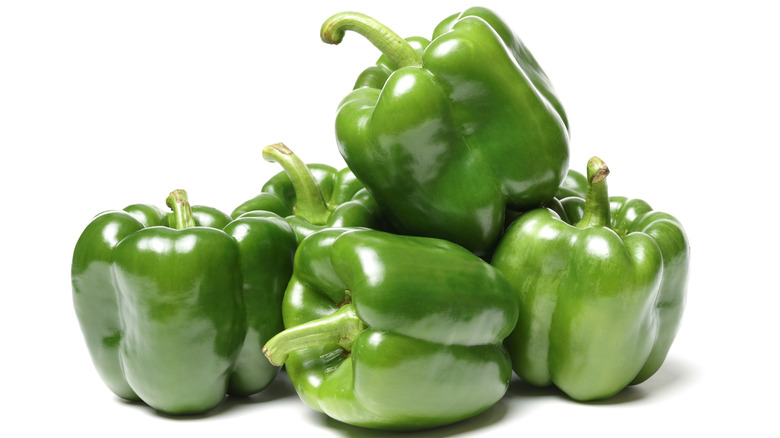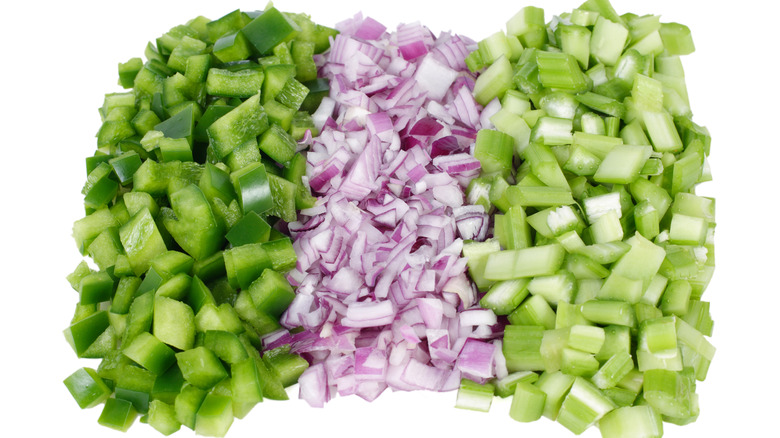Why The Cajun Holy Trinity Features Green Bell Peppers
As Mardi Gras season approaches, it's almost time to lesseiz bon temps rouler again. For those uninitiated with Cajun culture, that means "let the good times roll" in French. A Louisiana-style party isn't complete without a big pot of seafood gumbo, etouffee, or jambalaya. If you really want to get your Cajun on before having a piece of sweet and tasty King Cake, you might even decide to get adventurous by baking a savory crawfish pie.
All these piquant recipes have their own nuances, from making a good roux to getting the spices just right for your personal taste. One thing they all have in common, however, is chopping good portions of several veggies. These are known as the Holy Trinity of Cajun cooking. In traditional French cooking, chopped onions, celery, and carrots are called mirepoix, as mentioned in The Forked Spoon. In the Cajun Holy Trinity, the carrots are swapped for bell peppers. It's a tasty sub, but how did that happen?
The origin of bell pepper in the Cajun Holy Trinity
It's no secret that the British and the French were feuding back in the 1700s, which is one of the reasons why so many Acadians (later given the slang name Cajuns) who were deported from Canada in the mid-1700s ended up in the French colony of Louisiana. In addition, many French Catholics joined them there, and it stands to reason that these migrants were all well acquainted with mirepoix in their cooking, as noted by Chili Pepper Madness.
The main problem with continuing that cooking tradition is that carrots don't thrive without very sandy soil, and that's not the type they have to work with in the Southern United States. Peppers, however, do grow well in the less-sandy loam there. So, in the process of making do with what they had, the Holy Trinity was born. Centuries later, most folks who love Louisiana cooking can scarcely imagine any type of treasured Cajun dish being made with carrots instead of bell peppers.

